TechRadar Verdict
The DJI Mini 4K is the most capable drone for beginners for the money. It's effectively a minor update of DJI's entry-level Mini 2 SE, upping video quality from 2.7K to 4K, which also unleashes a 2x digital zoom to get closer footage of your surroundings. Otherwise, it's as you were for DJI's cheapest Mini-series drone; a 3-axis gimbal, reasonable Level 5 wind resistance, flight times of up to 31 minutes and an arsenal of easy flight moves with DJI's handy Fly app. If you're just getting started with drones, the Mini 4K is an excellent value option.
Pros
- +
Excellent value
- +
4K video quality beats rivals
- +
Probably your best first drone
Cons
- -
No object-collision sensors
- -
Lacks subject tracking found in pricier models like the Mini 4 Pro
Why you can trust TechRadar
DJI Mini 4K: one-minute review
Considering that the DJI Mini 4K is the best budget drone for beginners, it made an understated entrance. There were no bells and whistles, just a quiet appearance on Amazon, and I can see why: it's essentially the same drone as DJI's previous entry-level model, the Mini 2 SE, only with higher-resolution 4K video, which also enables a 2x digital zoom.
Video quality is further bolstered by a higher 100Mbps bitrate, but otherwise this is almost an identical drone to the Mini 2 SE. That's no bad thing – DJI has addressed the former's single weakness – 'just' 2.7K video – and priced its successor aggressively. In one fell swoop, DJI outgunned the growing competition, which includes capable rivals such as the Potensic Atom.
Since the Mini 4K was launched, DJI announced an all-new drone, the DJI Neo, which is even cheaper than the Mini 4K and shoots 4K video. However, the half-size selfie drone is an altogether different proposition. If you want the traditional drone-flying experience, complete with a 3-axis mechanical gimbal and sturdier flight performance including level 5 wind resistance, the Mini series, in which the Mini 4K is the new entry-level model, remains your best bet. If you want even simpler operation, and smart AI-subject tracking features, the Neo is a fun alternative.

The Mini 4K offers decent battery life of up to 31 minutes on a single charge, and if you opt for the pricier Fly More Combo bundle you'll get an extra couple of batteries and charging hub thrown in for good measure.
DJI offers perhaps the most rounded experience for beginner pilots, with clear tutorials on the DJI Fly app, through which you control the Mini 4K's flights, complete with a scaled-back selection of DJI Quickshots flight moves, including dynamic movements such as Helix, Circle and Boomerang that will quickly elevate the quality of your aerial videos.
If money is no object, the DJI Mini 4 Pro remains the most accomplished sub-250g choice, with its clever subject tracking and industry-leading flight safety features like omnidirectional object sensing. But if you simply want to see what all the fuss is about with drones without risking a huge amount of money, you can't go wrong with the DJI Mini 4K. It's excellent value, and the most capable sub-$300 / £300 drone on the market, even if the Neo has more flight options.
DJI Mini 4K: release date and price
- Released April 29 2024
- Not available from the DJI store in Australia
- The base kit costs just $299 / £269
- Fly More Combo bundle costs $449 / £399
The DJI Mini 4K was announced in April 2024, and is aggressively priced at $299 / £269 for the base kit, which made it DJI's cheapest 4K drone until the DJI Neo was launched in September 2024 (though as mentioned the Neo is a different kind of drone). That launch price was 10% cheaper than that of the DJI Mini 2SE, which is practically the same drone as the Mini 4K, although the former only shoots 2.7K video, making the Mini 4K excellent value by comparison.
Sign up for breaking news, reviews, opinion, top tech deals, and more.
Should you want the Fly More Combo bundle, which includes an additional two batteries, a charging hub and a shoulder bag, the price jumps up to $449 / £399. The Mini 4K is currently not directly available from DJI in Australia.
- Price score: 4.5/5
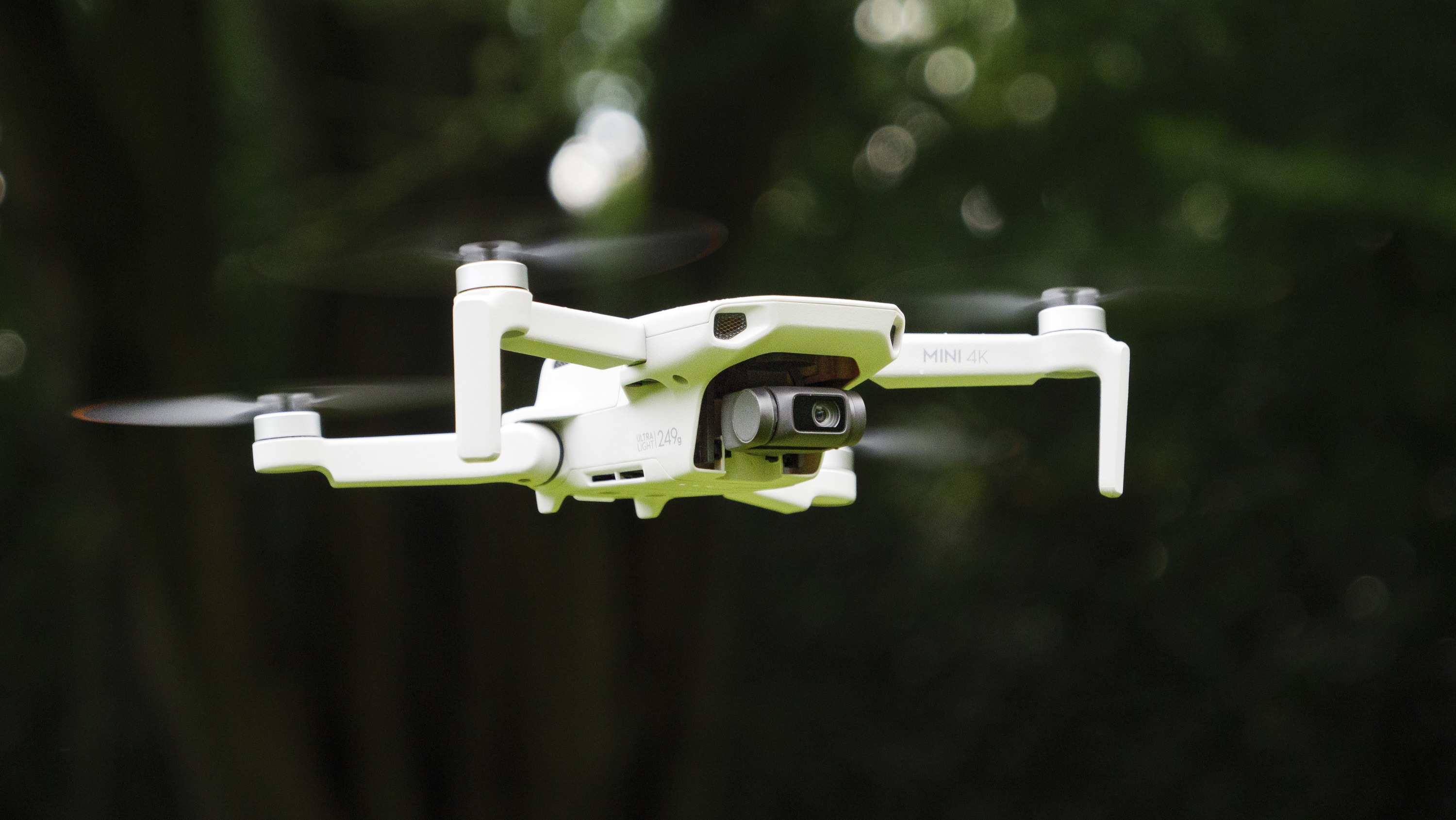
DJI Mini 4K: specs
| Camera: | 12MP 1/2.3-inch CMOS sensor |
| Video resolution: | Up to 4K |
| Frame rates: | 4K up to 30fps / 2.7K up to 60fps / FHD up to 60fps |
| Video transmission range: | 10km (FCC), 6km (CE/SRRC/MIC) |
| Flight modes: | Sport, Normal, QuickShots (Dronie, Helix, Rocket, Circle and Boomerang) |
| Battery: | 2,250mAh / up to 31 minutes flight time |
| Charger type: | USB-C / Battery Charging Hub |
| Weight: | 8.68oz / 246g |
| Dimensions: | 138 x 81 x 58mm (folded) / 248 x 289 x 56mm (unfolded) |
DJI Mini 4K: design and handling
- Weighs less than 250g
- Level 5 wind resistance provides reasonably stable flight
- Three-axis gimbal for smooth video footage
- Downward-facing sensors only, no other obstacle avoidance
The DJI Mini 4K is practically a carbon copy of the Mini 2 SE. That means it remains under 250g, and within the regulator-friendly category for most regions (there are no registration or ID requirements for recreational use in the US). Given that it has a camera though, users in the UK will need to register with the CAA for a flyer ID before taking flight.
The Fly More Combo bundle I tested includes replacement propellors and a screwdriver for when you need to swap out old or damaged propellors for new ones, two spare batteries and a charging hub, plus the RC-N1C remote controller. The controller connects to your phone, with a clamp that extends to hold just about any size of phone, plus it comes with USB-C / Lightning cables for a direct connection to your Android phone or older iPhone.
There's a single camera, capable of shooting 12MP photos in JPEG or raw (DNG) format (the latter provides more editing flexibility) and video up to 4K. The camera is supported by a three-axis mechanical gimbal to ensure that your video footage is as smooth as possible.

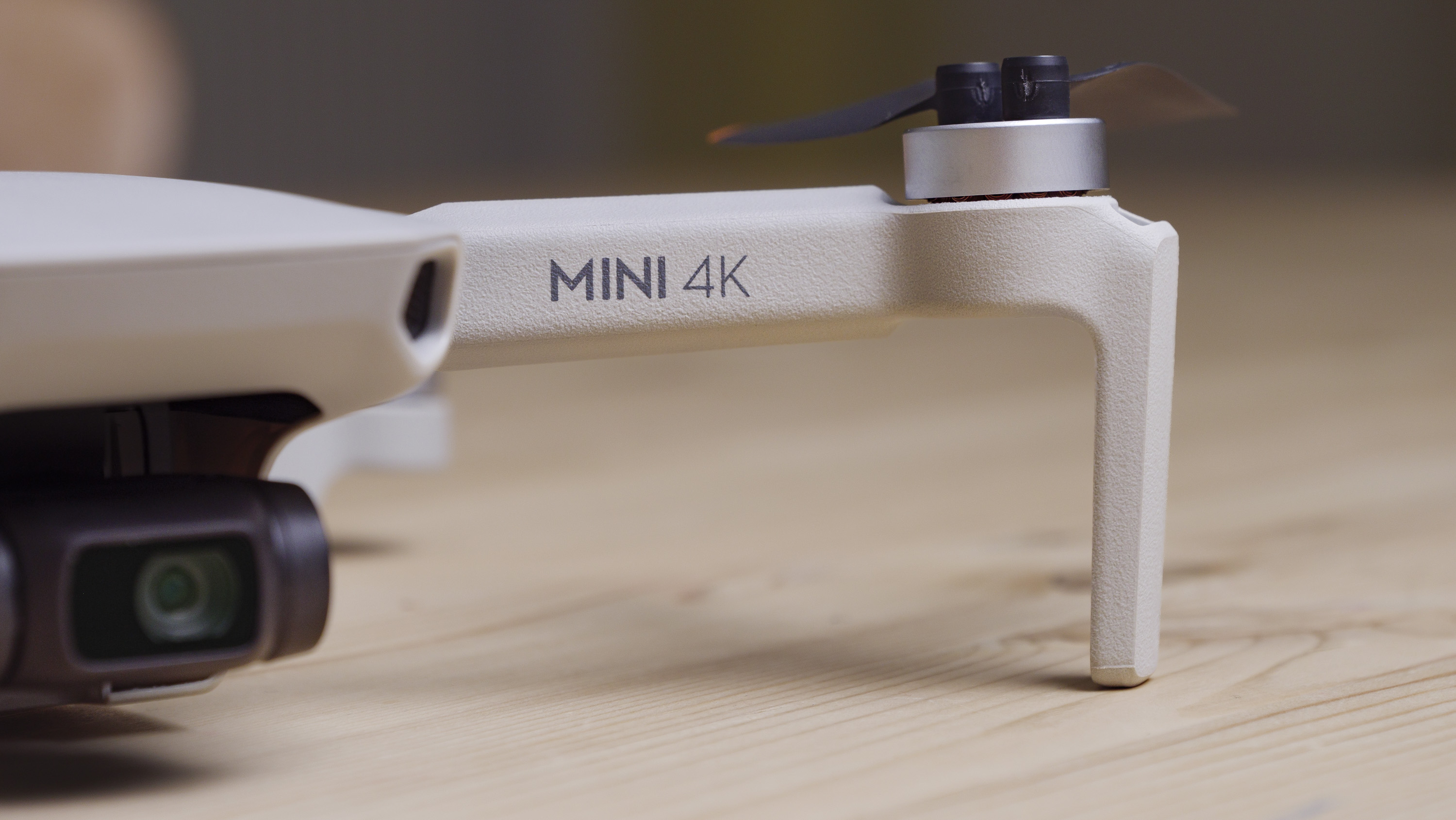

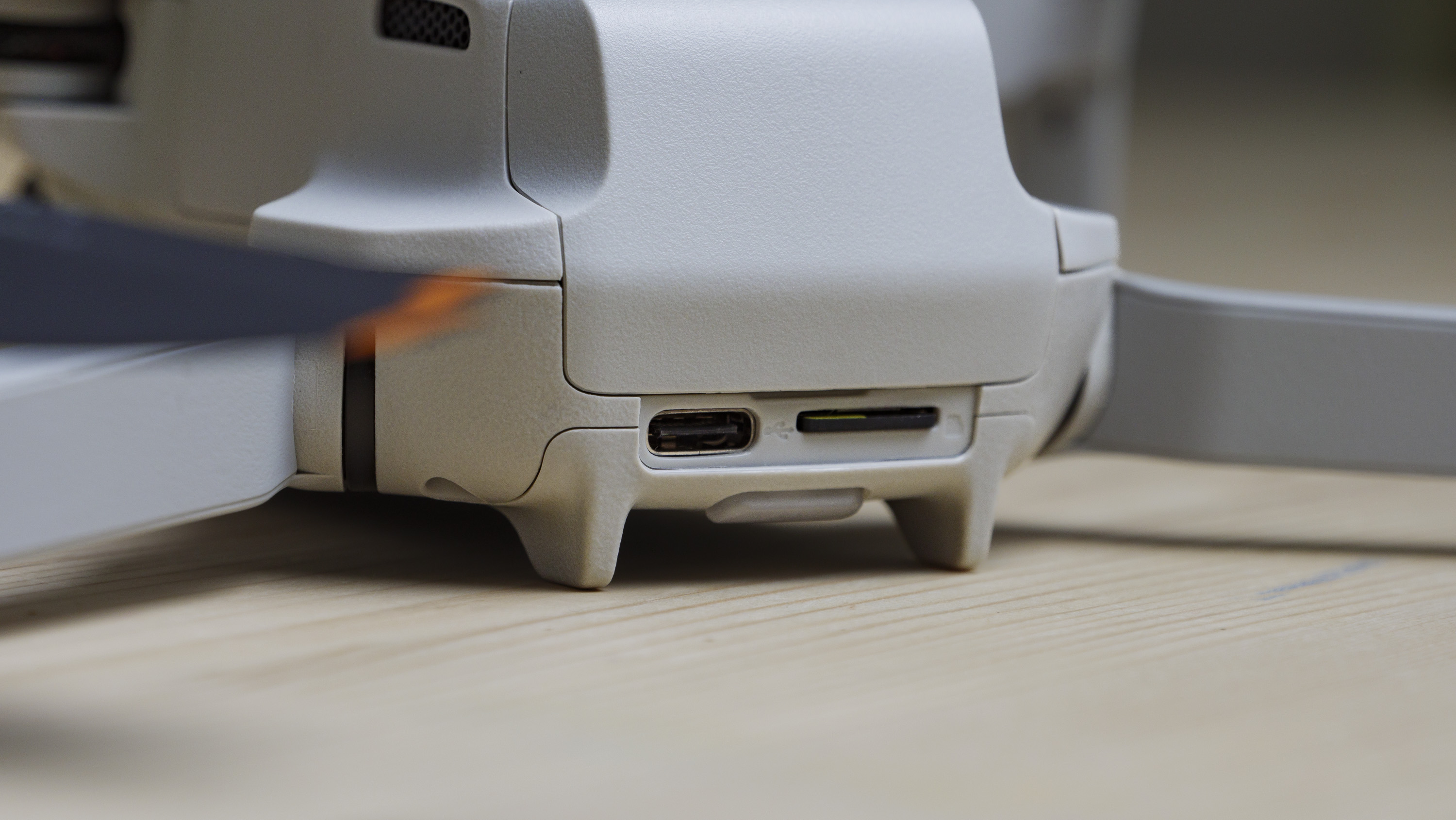
Once you have the DJI's Fly app installed and your phone connected to the controller, it takes little to no time to get airborne: press and hold the take-off button and the Mini 4K will rise to a height of 1.2m, and hover while you get yourself in the zone for flying.
Wind resistance is rated for up to level 5 – that's up to 19-24mph / 29-38kph, which is slightly more robust than the DJI Neo, which is only rated up to level 4. I found the Mini 4K was able to withstand a moderate breeze, although of course you can hear and see it fighting to remain stable in such conditions, and I'd advise against attempting to fly in properly windy conditions.
The Fly app, together with the controller, offer several functions: Return to Home (RTH), QuickShots flight moves, and a variety of camera modes, including photo and video capture (with a button on the controller to switch between the two), panorama, and Timed Shot (interval shooting).
If you're getting started with drones, the Mini 4K has plenty for you to sink your teeth into. One notable omission, though, which you won't find on a drone at this price point, is obstacle avoidance. There are two downward-facing sensors that assist the drone for landing and can detect objects, with a precision range of 0.5-10m, but you're not getting the sophisticated omnidirectional obstacle avoidance of the pricier Mini 4 Pro.
I've been using the Mini 4K with the RC-N1C controller for months, and naturally, without obstacle avoidance crashes are almost inevitable. However, I've found that the Mini 4K has withstood minor collisions with tree branches and so on, and the consequent tumbling to the ground, admirably. It might be plastic, but the Mini 4K can take a few knocks.
You can register for DJI Care Refresh within 48 hours of activating the Mini 4K, which covers you for two replacements, water damage and flyaway, and which is probably a good idea if you tend to be more gung-ho rather than overly cautious. Prices for this start at $59 / £35.
- Design score: 4.5/5
DJI Min 4K: features and performance
- Quickshots for easy flight moves
- Normal, Sport and Cine flight modes
- Decent battery life of up to 31 minutes
- Maximum transmission 10km (FCC) / 6km (CE/SRRC/MIC)
DJI lists the Mini 4K's flight time as up to 31 minutes, but that's measured in a controlled setting. What you actually get in real-world use is almost certainly less, and will be influenced by factors including wind speed and the flight maneuvers you're performing, and overall it's better to keep your expectations on the lower side. That said, with typical use in moderate wind I was averaging over 20 minutes, and I'm not sure that you'll find a better battery performance in another drone at this level.
I was also armed with the two additional batteries included in the Fly More Combo, effectively tripling flight times on any given outing, and the charging hub can be topped up on-the-go via USB-C.
The maximum transmission range is up to 10km, depending on what region you're flying in and what level of interference there is where you're flying. Users in Europe, for example, are restricted to 6km. In any case, beginners are unlikely to get anywhere near those kinds of distances on a single flight, and you'll need to make sure that Return to Home is set up for your take-off point in the likely event you get disorientated as to the drone's position.
You can configure the Mini 4K's max possible altitude and flight distances, and the height at which it rises to when Return to Home is initiated. There's a 500m altitude cap, although if you're playing it safe as a beginner you should stick to 150m or lower, which will likely be the legal limit in your region anyway if you don't have a certificate of competency. Again, max distance can be set up to 5000m or the limit removed entirely, but when you're starting out it's probably a good idea to stick to much closer. The Mini 4K is fed all of this data through GPS + GLONASS + Galileo satellite systems.
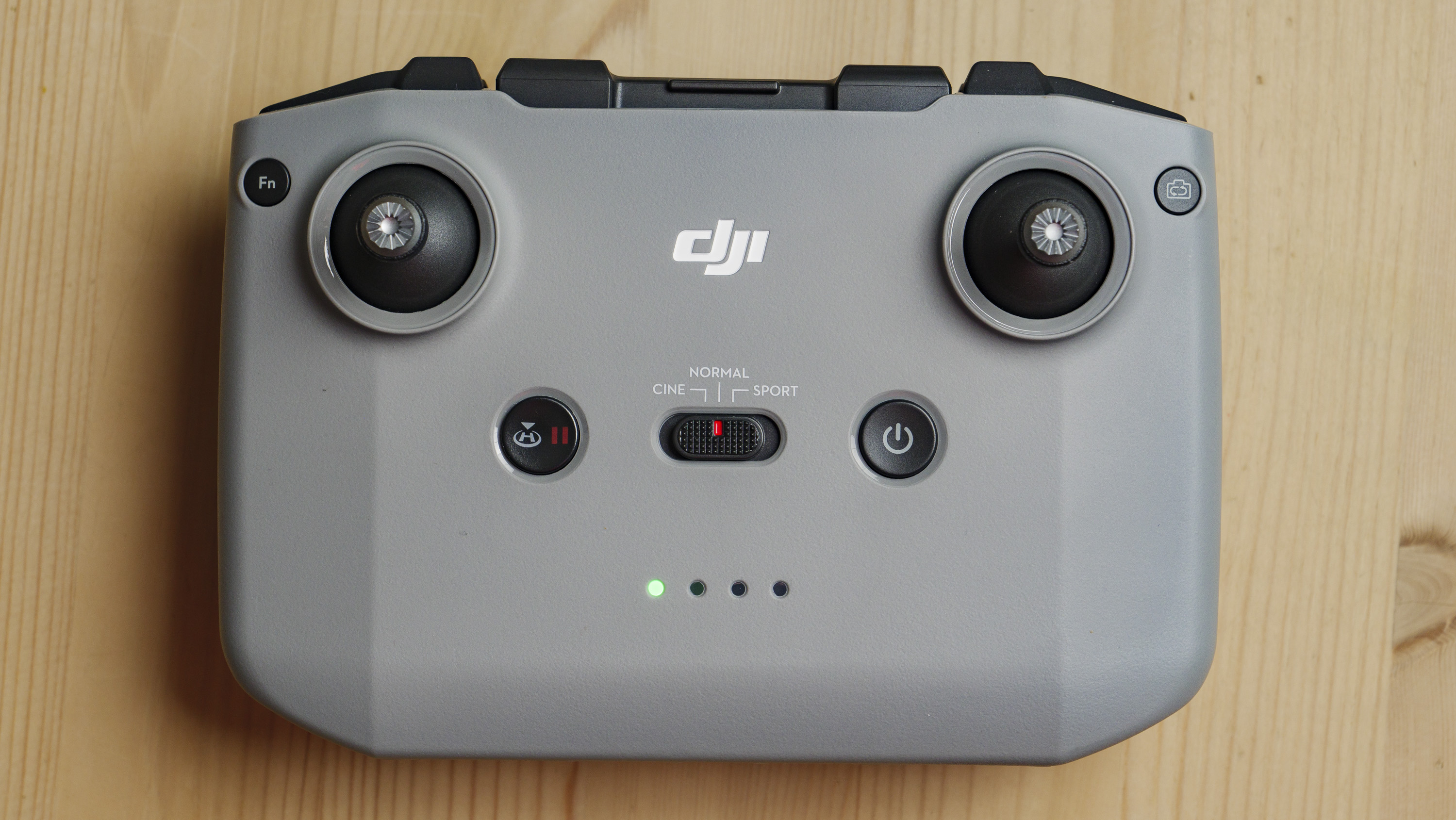

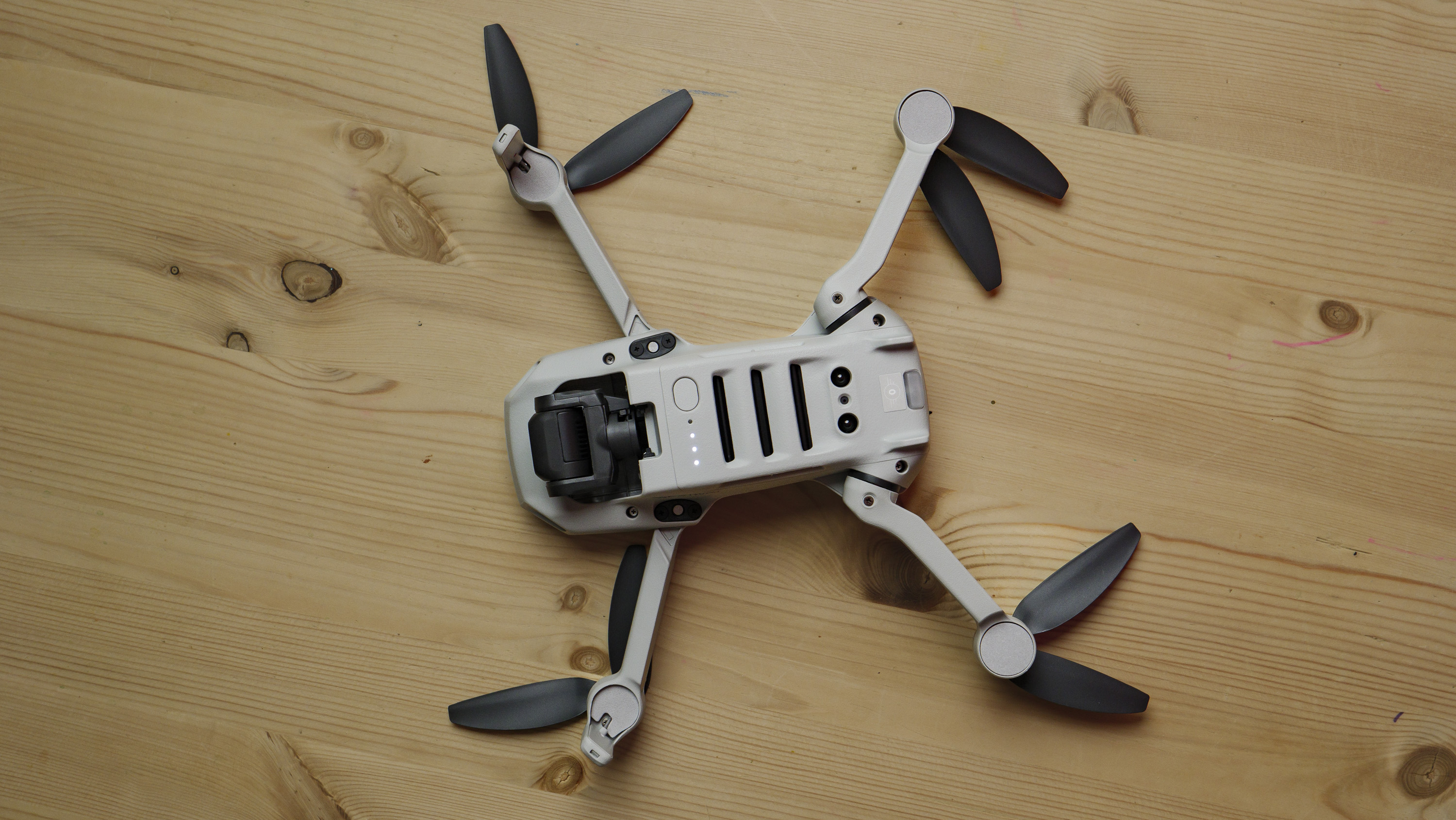
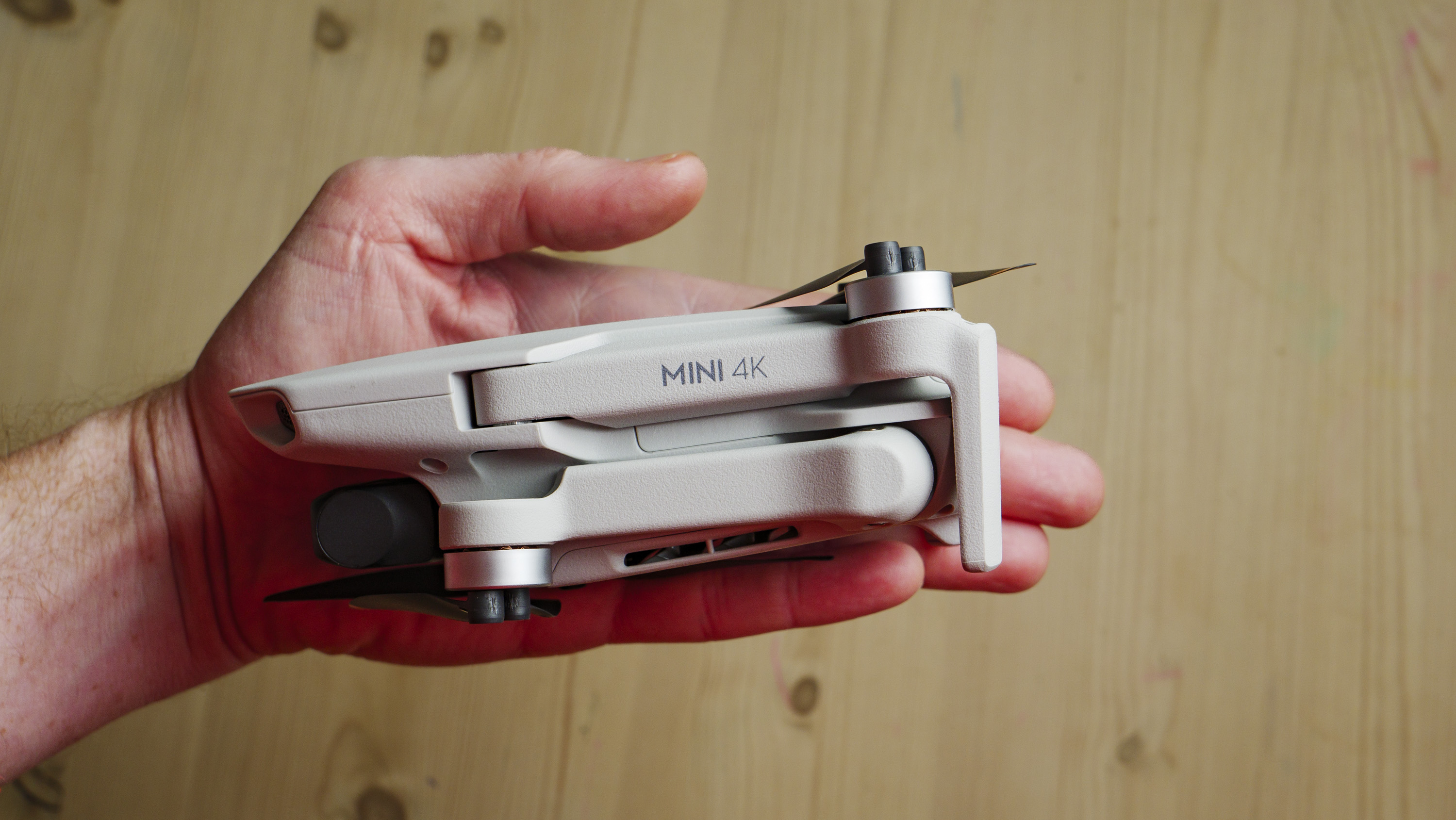
On the controller you'll find three flight modes: Cine, Normal and Sport, each with a different max speed and responsiveness. Cine mode is the slowest of the three, designed to get you the smoothest possible aerial videos, while of course Sport is the niftiest to unleash piloting fun.
Flight speeds in Sport mode top out at 35.79mph and are no match for FPV drones in manual mode such as the DJI Avata 2, but are plenty quick enough while you find your feet and build your piloting skills. Cine mode is significantly slower than that.
And then there's DJI QuickShots flight moves, which include Dronie, Helix, Rocket, Circle, and Boomerang. Circle performs a lateral 360-degree move around your chosen subject – you simply select suggested subjects or draw a box around the chosen subject, and off the drone goes into action. Boomerang does a similar move while gradually gaining height.
These simple flight moves can improve the quality of your aerial videos as you center on points of interest around you. Other DJI drones have additional QuickShots moves in Spotlight and Follow. The Mini 4K does not offer Follow, and it lacks Follow Me subject tracking, which you get with pricier models and even the new Neo selfie drone.
- Features score: 4.5/5
DJI Mini 4K: image and video quality
- 1/2.3-inch sensor
- Up to 4K 30fps video, 2.7K up to 60fps
- 12MP JPEG + RAW photos

The Mini 4K's 1/2.3-inch sensor is larger than the sensor found in the Neo, and smaller than the one in the Mini 3 and Mini 4 Pro drones. As such, its 4K video image quality sits somewhere in the middle in terms of color depth, dynamic range and low-light clarity.
That sensor size is roughly equivalent to what you'd find in a standard smartphone, only you don't have the computational photography modes and HDR settings afforded to today's handsets; if the sun is directly in your shot, expect blown-out highlights. However, I still found detail to be very sharp at first light before the sun lapped over the landscape.
Video resolution tops out at 4K 30fps, while cinematic half-speed 60fps videos can be shot in 2.7K and Full HD resolutions. Photos are up to 12MP (in 4:3 aspect, with a 16:9 cropped format also available) and can be shot in either JPEG or raw, with the latter offer more editing flexibility. Files are recorded onto microSD card, with compatibility for cards up to 256GB.
DJI has upped the maximum video bitrate to 100Mbps (it was 40Mbps in the Mini 2 SE). So not only does the Mini 4K offer higher-resolution video than the Mini 2 SE, but its 2.7K video is also less compressed.
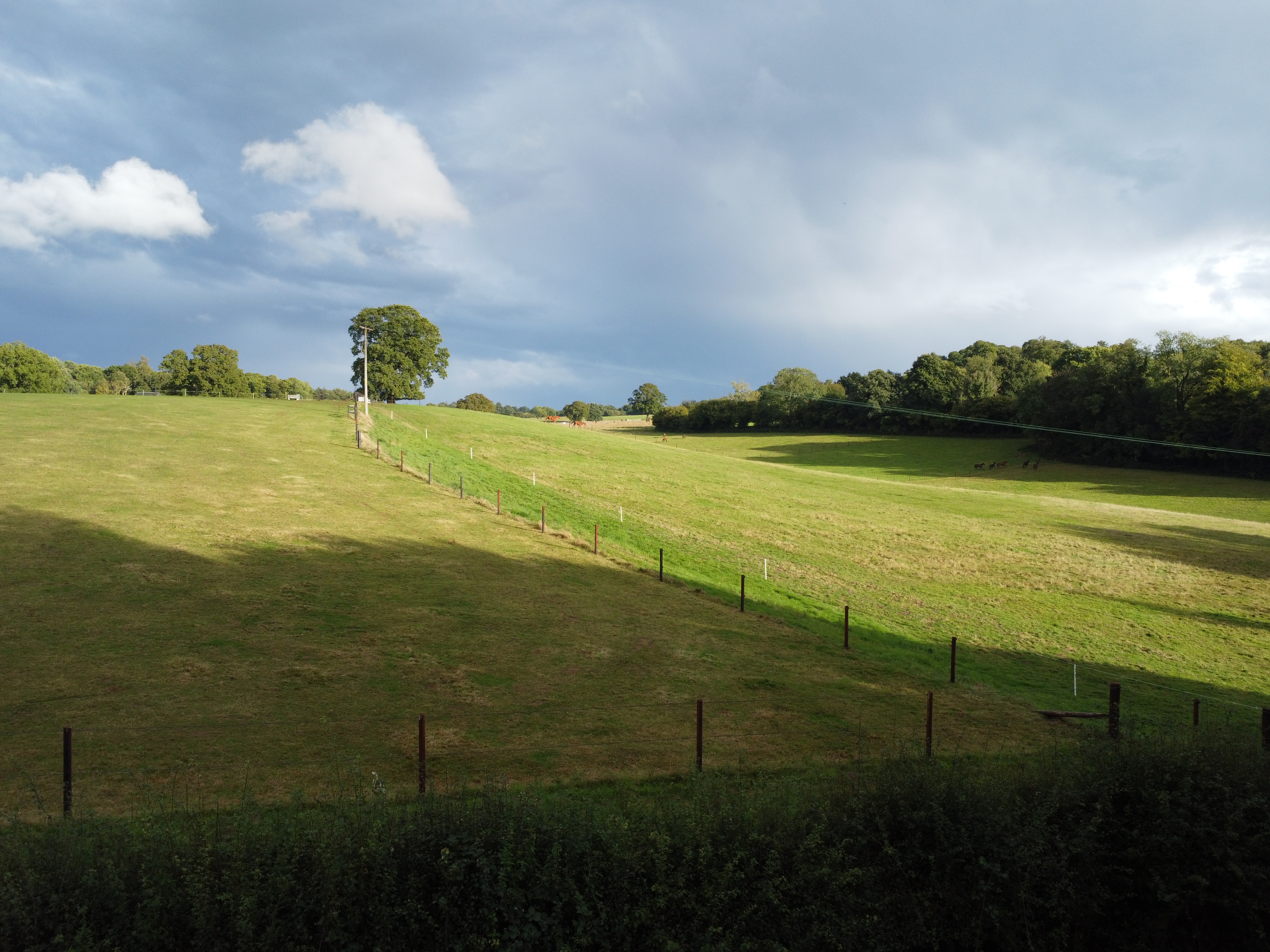
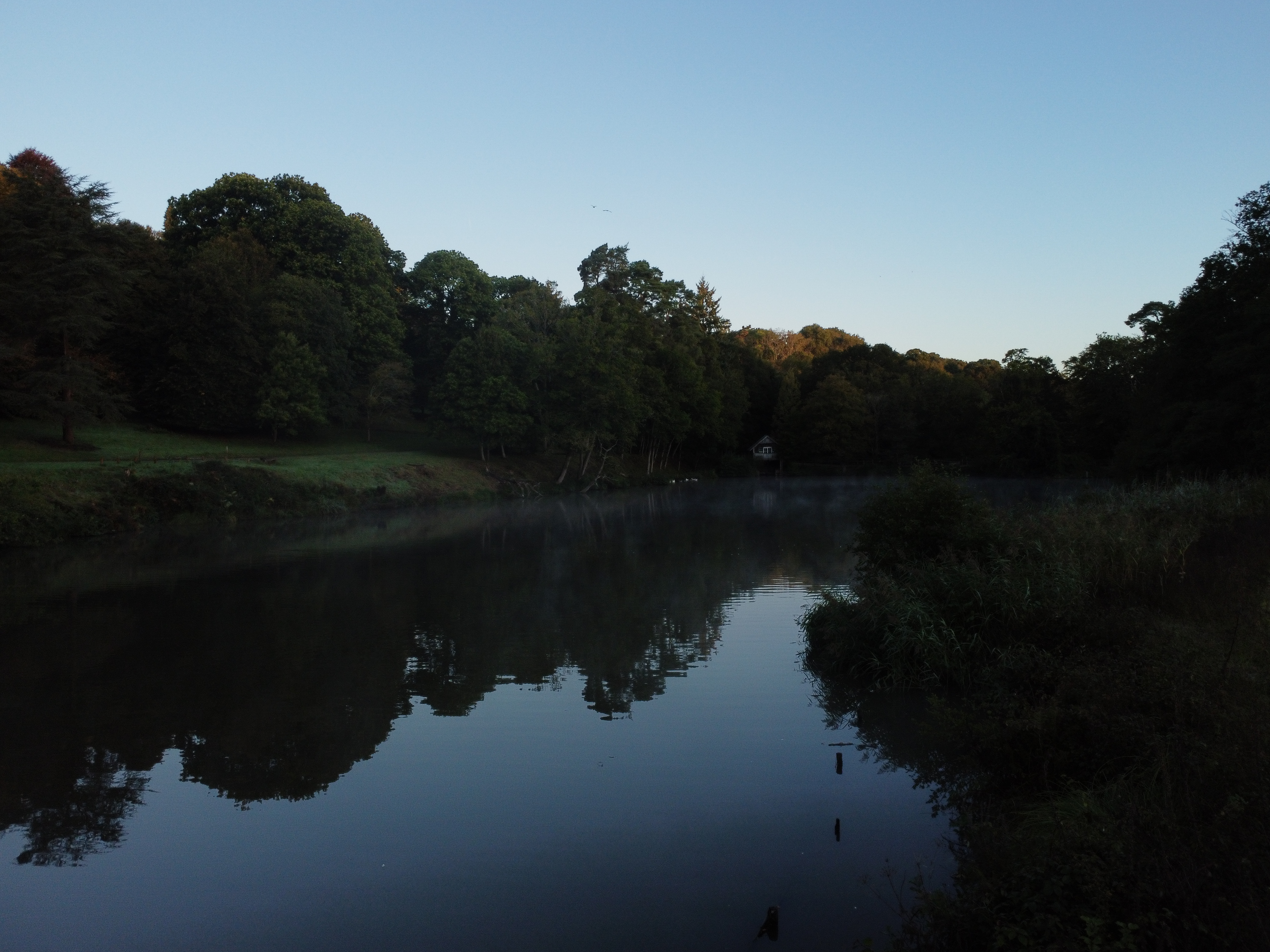
There's a standard color profile for photo and video – what you see is what you get. However, you can easily edit the colors in raw DNG format photos in your choice of photo editor. If you're a keen editor, you'll probably want to shoot photos in both raw and JPEG, just in case the JPEG photos aren't to your taste. However, there's no flat color profile for video, which is pretty normal for a beginner drone, so there's not much scope for color-grading videos.
What's unusual for a drone at this price point is that you can switch from the Mini 4K's Auto setting to a Pro mode for manual control over exposure settings for photo and video, including the 1/30 to 1/8000 shutter speed and ISO 100 to 3200 ranges. That's an excellent feature for discerning image makers, though I suspect most people will keep the Mini 4K in Auto and be pleased with the results.
The three-axis gimbal offer a -110° to 35° tilt range, -35° to 35° of roll and -20° to 20° pan, and works in tandem with image stabilization to give you smooth video footage. Unless you're fighting high winds or making jerky movements on the controller – which requires significant finesse – then you can expect super-smooth video footage, especially in Cine mode.
- Image quality score: 4.5/5
DJI Mini 4K sample video 4K
DJI Mini 4K Quickshots
DJI Mini 4K: testing scorecard
| Attributes | Notes | Rating |
|---|---|---|
| Price | Starts life at a lower price than the Mini 2 SE did, despite featuring 4K video. | 4.5/5 |
| Design | Sub 250g, level 5 wind resistance, downward sensing only | 4.5/5 |
| Performance | Decent battery life and selection of flight modes and moves | 4.5/5 |
| Image and video quality | 4K video with respectable bitrate, plus raw and JPEG photos with manual exposure control | 4.5/5 |
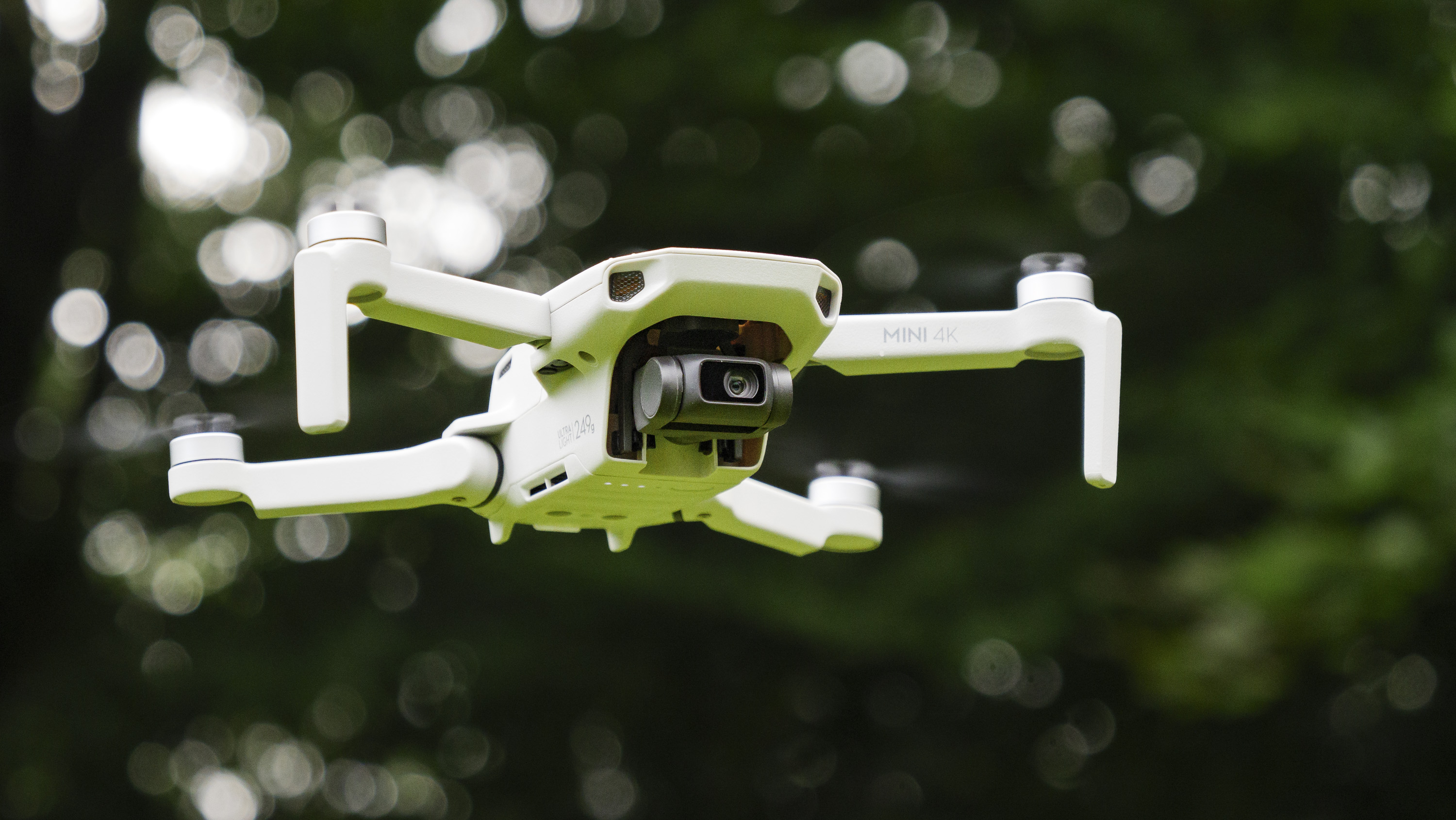
Should I buy the DJI Mini 4K?
Buy it if...
You want the best 4K drone under $300
Putting the DJI Neo aside, which is a different proposition, the Mini 4K is the best drone money can buy for under $300.
You’re buying your first drone
The Mini 4K is a superb first drone, with decent flight performance and video quality, plus manual control over camera settings.
You want decent battery life
Up to 31 minutes from a fully charged battery is very impressive, and you'll get triple that with the Fly More Combo kit.
Don't buy it if...
You want the very best sub-250g drone no matter the cost
If money is no object, your best first drone is the DJI Mini 4 Pro.
You're more interested in aerial selfies than flying
DJI's Neo is smaller, cheaper and even easier to use, with intelligent subject tracking making selfies on the move an autonomous doddle.
You'd be better off with obstacle avoidance
The Mini 4K only has downward-facing sensors primarily designed to aid landing, whereas the Mini 4 Pro has omnidirectional obstacle avoidance that'll help you avoid crashes.
DJI Mini 4K: also consider
Not to be confused with the Potensic Atom SE, this accomplished drone for beginners finally gave DJI firm competition at this point of the market, thanks to its 4K video, intelligent flight features and manual camera control. DJI then went and priced the Mini 4K aggressively and it's a slightly more rounded drone overall, but the Atom can be found on sale for less.
Read our in-depth Potensic Atom review
If money is no object, then the Mini 4K Pro is the best beginner drone available. Around 3x the cost, it still falls below 250g and therefore within the same category of drone as the Mini 4K, with very few restrictions, plus it's an easier drone to test your wings thanks to omnidirectional obstacle avoidance and smart subject tracking. If however, it's out of your budget, then the older Mini 3 is the next model up from the Mini 4K in DJI's range of beginner drones.
Read our in-depth DJI Mini 4K Pro review
How I tested the DJI Mini 4K

- Long term use
- Flown with the DJI RC-N1C Controller and Fly app
- Videos and photos made with all available file formats
I've had the DJI Mini 4K for months, and during this time have become very familiar with it. The Fly More Combo was bundled with the charging hub, two extra batteries and the DJI RC-N1C controller, through which I have controlled the drone, via the DJI Fly app for Android.
The tiny drone has been flown in all kinds of weather, even inclement, showing it's able to withstand light rain and reasonably brisk wind. It's taken a few knocks into tree branches and has so far withstood this rough treatment.
I've made photos and videos with all of the available settings, which includes 4K, 2.7K, Full HD videos, plus 12MP JPEG and RAW photos, in good light and low light at dusk.
First reviewed September 2024

Tim is the Cameras editor at TechRadar. He has enjoyed more than 15 years in the photo video industry with most of those in the world of tech journalism. During his time as Deputy Technical Editor with Amateur Photographer, as a freelancer and consequently editor at Tech Radar, Tim has developed a deeply technical knowledge and practical experience with cameras, educating others through news, reviews and features. He’s also worked in video production for Studio 44 with clients including Canon, and volunteers his spare time to consult a non-profit, diverse stories team based in Nairobi. Tim is curious, a keen creative, avid footballer and runner, and moderate flat white drinker who has lived in Kenya and believes we have much to enjoy and learn from each other.

